The antique Japanese-era Kaohsiung Main Station (高雄車站) has survived the facelift the city is currently undergoing. But only just. It is dwarfed by the still-under-construction new station building, which, like so much of that has been built in Kaohsiung of late, is big, brash and orientated towards the future.
It takes some time to find my way inside this goliath building and onboard an early-bird Tze-Chiang Express Train. We’re soon rolling eastward along the Pingtung Line (屏東縣). First completed in 1941— although upgraded at various stages since — the line is 61.3 kilometers long and connects Kaohsiung with Fangliao (枋寮) down the coast.
Alighting at Jioucyutung (九曲堂) just 15-minutes down the line, I’m greeted by a statue depicting farmers harvesting pineapples in the middle of the station forecourt. This is in commemoration of the Jioucyutang Taifang Company, a pineapple canning factory that was established here in 1924 and in its heyday, exported “sweet and fragrant” Formosa pineapples to the world. The old factory building has since been turned into a museum, which overlooks the park I’m tasked with walking through to get to the first site on my itinerary, the Lida Toyoji Memorial Monument (飯田豐二紀念碑).
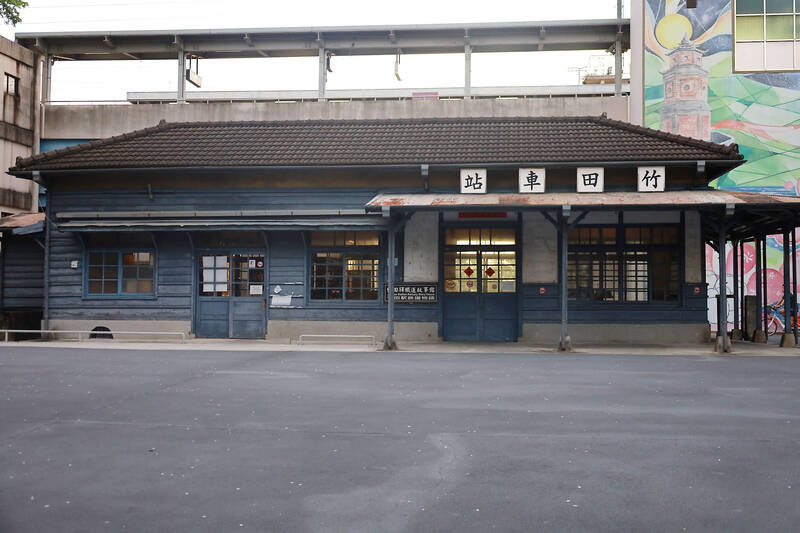
Photo: Thomas Bird, Taipei Times
I find the stone obelisk dedicated to the Japanese engineer shaded beneath a banyan tree. Lida Toyoji first came to Taiwan to work on the Alishan Mountain Railway and was later made the Jioucyutang station director. Among his responsibilities was to oversee the construction of the Gaoping Iron Bridge (then known as the Lower Tamsui River Iron Bridge), which was completed in 1913 and opened the following year, principally to transport sugar and fruit from the interior to the coast.
The steel truss bridge is a 10-minute walk from the monument and is now part of the Old Railway Bridge and Wetlands Ecological Park (舊鐵橋濕地生態公園). Despite the main section of the bridge having been washed away by typhoons that struck in 2005 and again in 2009, it remains an impressive sight. At 1,526 meters, it was the longest viaduct of its kind in East Asia on completion, and was in use for 73 years before being replaced by a new bridge in 1987.
It’s also open to walk along, a “hanging trail” that affords visitors a panoramic view of the wetlands that border the Gaoping River. Standing at the very end of the bridge should be a peaceful experience, and would be were it not for the cicadas chorusing in unison. I feel my shoulders burn under the heavyweight sun. But the view of river birds swooping down into brown water heavy with silt carried from distant hills is more than compensation for having to endure some insect hiss and tropical heat.
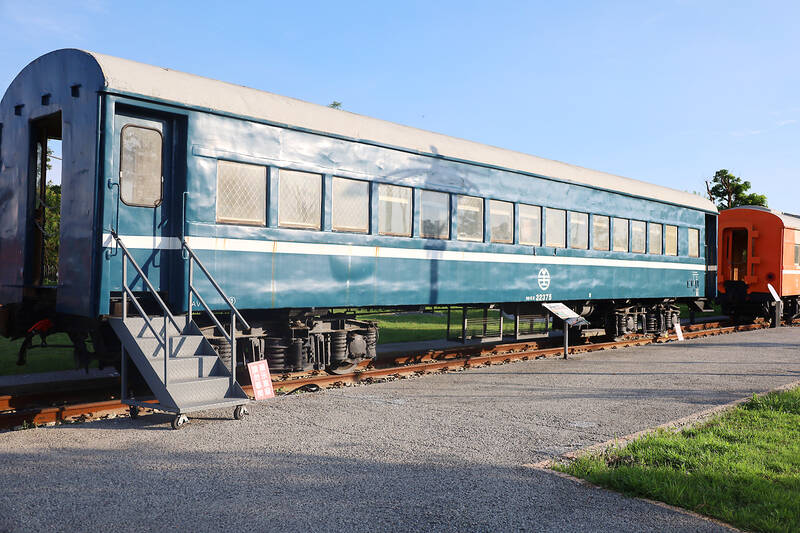
Photo: Thomas Bird, Taipei Times
DOWN THE LINE
A second view of the old bridge is won from the comfort of the train carriage as it rolls along the adjacent river bridge en route to Lioukuaicuo (六塊厝).
Beyond Lioukuaicuo, the train rises onto an elevated section of track and all travelers get to see of Pingtung is the dragons that adorn Buddhist temples interspersed between the metal rooftops of apartment blocks.
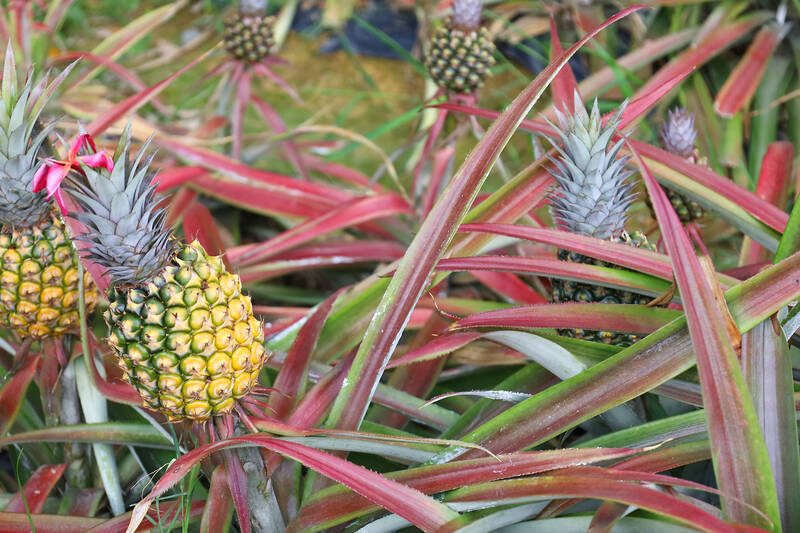
Photo: Thomas Bird, Taipei Times
I cross the platform and board a Puyuma Express Train for the remainder of the journey to Fangliao.
The 30-minute southward dash transports me through the gamut of southern scenes — wetlands, rice fields, villages framed by tropical fruit plantations and forests of betel palms.
Between the townships of Linbian (林邊) and Jiadong (佳冬) the sea is glimpsed at the mouth of the Linbian River.
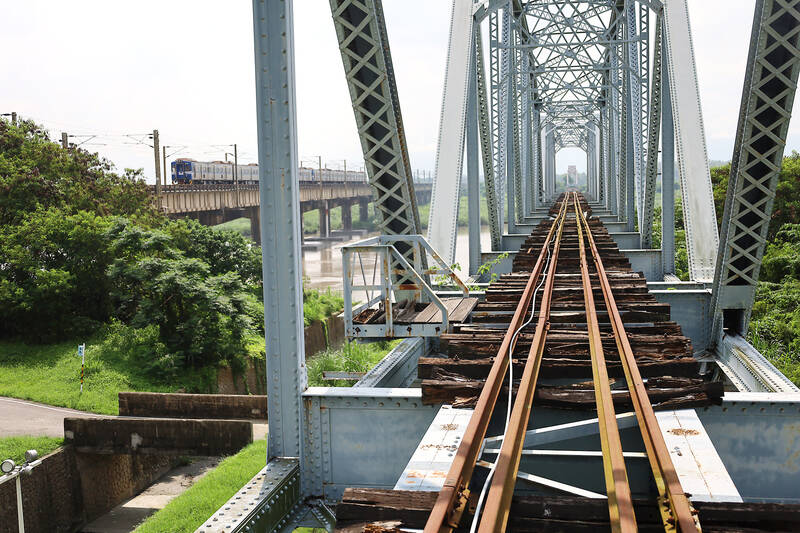
Photo: Thomas Bird, Taipei Times
The landscape on the other side of the river has been transformed by the hand of man into a realm of fish farms — concrete square pools, organized like rice paddies, lining both sides of the tracks.
Fangliao Station might be the last station on the line but it’s the first station that is actually in view of the sea, which is visible just a few blocks away. Stepping off the train, the air smells salty and tastes of fresh catch.
It’s a short walk to the coast, although a sweaty one. I get to the wave-breaking boulders on the water’s edge and immediately survey the waterfront for sustenance. Pi Coconut (椰們海景餐廳) lures me inside with the promise of some air-conditioned coolness. Seated on the second floor of the bistro, I enjoy a languid lunch gazing at distant tourist island Siaoliouciou (小琉球) on the horizon.
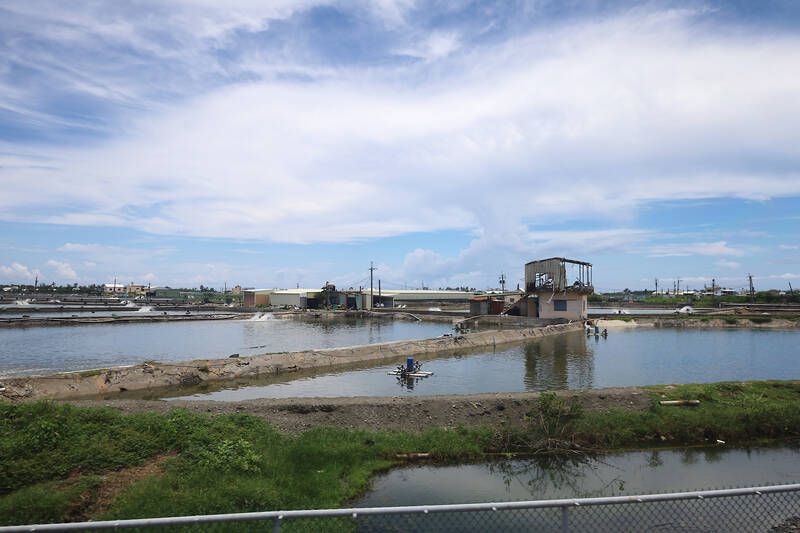
Photo: Thomas Bird, Taipei Times
Once fed and watered, a stroll is warranted, so I wander around the incense perfumed halls of the imposing temple Dedian Gong (德典宮), a huge Buddhist temple that is the spiritual centerpiece of Fangliao Township, before heading back to the station.
ROLLING BACK
Chaojhou (潮州) is located 25 kilometers back up the Pingtung Line as the crow flies. From the station forecourt, it’s a further 10-minutes by tourist bus to the township’s latest attraction, the Chaojhou Railway Park (潮州鐵道園區).
I anticipate a small and peripheral place, orientated to the train-spotter class of tourist. What I discover is an enormous museum, restaurant, gift shop and park that is packed with weekenders.
Inside, the museum chronicles the history of the Kaohsiung Railway Workshop, which, I learn, was established in Takao (today’s Kaohsiung) in 1900. It evolved into the one of the most important railyards in Taiwan. But as Kaohsiung grew and gentrified, a new railway workshop was ultimately warranted. The move to Chaojhou began in 2018, and the new museum opened in June, 2022 and christened the Chaozhou Workshop (潮州機廠).
The workshop’s adjunct railway park opened six months later and, by the looks of things, has been a roaring success. Outside there are a number of retired carriages and engines for enthusiasts to admire including a coal hopper from the 1950s, a yellow Japanese switcher locomotive of 1960s vintage and some passenger cars dating from a time when they were still decked with wood.
This being a family-orientated attraction, there is also a number of miniature trains for kids to ride on, as well as a large lake garden populated by goats, pigs and other farm animals, which visitors feed and fuss over.
Getting back on track requires a short taxi ride to Jhutian Station (竹田) one stop down the line from Chaojhou. Unlike the railway park, there is nobody (nor any animals) crowding the relics of railways past, which is just as well. The Japanese heritage buildings here are superb. Dating back to 1941, the old stationhouse, like in Kaohsiung, has been maintained for posterity. Peering through the window, I see it houses a small tourist office and shop selling railway-themed knickknacks, although it is closed at the time of my arrival.
The new double-tracked station stands directly behind it. Not many trains stop at small stations and I have a 30-minute wait for Local Train 3268 to take me back to Kaohsiung.
But the elevated platform wins me a VIP ticket for the sun setting beyond the palm trees and temples of the south, a sublime coda to a day spent on and off the Pingtung Line.

May 18 to May 24 Pastor Yang Hsu’s (楊煦) congregation was shocked upon seeing the land he chose to build his orphanage. It was surrounded by mountains on three sides, and the only way to access it was to cross a river by foot. The soil was poor due to runoff, and large rocks strewn across the plot prevented much from growing. In addition, there was no running water or electricity. But it was all Yang could afford. He and his Indigenous Atayal wife Lin Feng-ying (林鳳英) had already been caring for 24 orphans in their home, and they were in

On May 2, Chinese Nationalist Party (KMT) Chairman Eric Chu (朱立倫), at a meeting in support of Taipei city councilors at party headquarters, compared President William Lai (賴清德) to Hitler. Chu claimed that unlike any other democracy worldwide in history, no other leader was rooting out opposing parties like Lai and the Democratic Progressive Party (DPP). That his statements are wildly inaccurate was not the point. It was a rallying cry, not a history lesson. This was intentional to provoke the international diplomatic community into a response, which was promptly provided. Both the German and Israeli offices issued statements on Facebook

Even by the standards of Ukraine’s International Legion, which comprises volunteers from over 55 countries, Han has an unusual backstory. Born in Taichung, he grew up in Costa Rica — then one of Taiwan’s diplomatic allies — where a relative worked for the embassy. After attending an American international high school in San Jose, Costa Rica’s capital, Han — who prefers to use only his given name for OPSEC (operations security) reasons — moved to the US in his teens. He attended Penn State University before returning to Taiwan to work in the semiconductor industry in Kaohsiung, where he

President William Lai (賴清德) yesterday delivered an address marking the first anniversary of his presidency. In the speech, Lai affirmed Taiwan’s global role in technology, trade and security. He announced economic and national security initiatives, and emphasized democratic values and cross-party cooperation. The following is the full text of his speech: Yesterday, outside of Beida Elementary School in New Taipei City’s Sanxia District (三峽), there was a major traffic accident that, sadly, claimed several lives and resulted in multiple injuries. The Executive Yuan immediately formed a task force, and last night I personally visited the victims in hospital. Central government agencies and the